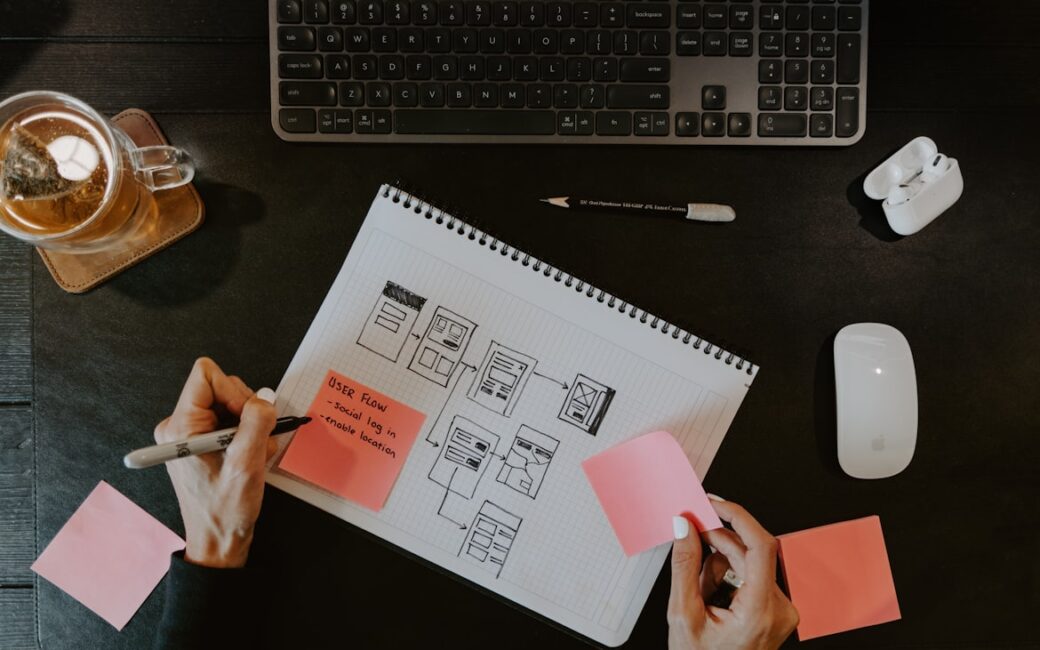Featured Photo By: Kelly Sikkema on Unsplash
Design Process
A design process is a sequence of actions that the creator/developer or anyone uses to create, test, and refine a product or learning material in order to result in an outcome or a goal in mind (Jonassen, 2008). It usually is an interactive process where it is similar to design thinking which includes empathy, defining, ideate, prototype, and testing a product (Shé et al., 2022). Much like the divergent and convergent thinking, the design process involves planning, prototyping, testing, feedback, and revision. Convergent and divergent thinking creates an opportunity to be creative and brainstorm, and then narrowing them down into concrete choices and decisions that helps the individual one step closer to their project’s goals (Wigert et al., 2022). In learning design, it also connects to backward design where you start with what you want your audience to understand and do, and then plan backwards to make sure that every step has a clear purpose and outcome (Reynolds &Kearns, 2017).
Challenge A
With that being said, my process in Challenge A: Comics was to create something that showed passion, hard work, and whimsy while keeping in mind “Why I was making this? Who I was making it for”, and “What did I want my audience to learn?” During the process, however, I found that exercising iteration such as reading the comic over a period of a few days and reviewing it with a fresh mind allowed for more ideas of improvements in which I could incorporate more multimedia design principles and/or drive my goal of wanting a fun and educational comic. In hindsight, I could have shown the dish’s progression better by gradually darkening the pot or background. The arrows felt unclear, and I struggled to make the panels flow intuitively without relying solely on them.
Challenge B
For Challenge B, I applied the backward design from the start where I identified the goal: teaching kids to exercise healthy habits from handwashing and then shaping the narration and visuals around the topic and my audience. I kept the educational and fun theme but added more energy through narration, which let me emphasize tone and apply multimedia principles like captions and sound effects. The kid-friendly narration and simple visuals make the video engaging and easy to follow for children learning about handwashing, which supports my goal and gives rise to the theories learned in class. Overall, I enjoy the design process and feedback because it allows me to be engaged with an audience while delivering the information I’m trying to convey, which makes the final product more thoughtful and effective.
Related Resource
Below is a great podcast and quote about design for learning and how educators can create more engaging learning experiences! Click here or the link below to explore the episode and read the full transcript.
“Good design shouldn’t have to be explained.” – Bonni Stachowiak [00:11:47]
References
Jonassen, D. H. (2008). Instructional design as design problem solving: An iterative process. Educational Technology, 21-26.
Reynolds, H. L., & Kearns, K. D. (2017). A planning tool for incorporating backward design, active learning, and authentic assessment in the college classroom. College Teaching, 65(1), 17-27.
Shé, C. N., Farrell, O., Brunton, J., & Costello, E. (2022). Integrating design thinking into instructional design: The# OpenTeach case study. Australasian Journal of Educational Technology, 38(1), 33-52.
Stachowiak, B. (Host). (2023, October 5). Design for learning (Episode 486) [Audio podcast episode]. In Teaching in Higher Ed. https://teachinginhighered.com/podcast/design-for-learning/
Wigert, B. G., Murugavel, V. R., & Reiter-Palmon, R. (2022). The utility of divergent and convergent thinking in the problem construction processes during creative problem-solving. Psychology of Aesthetics, Creativity, and the Arts.
